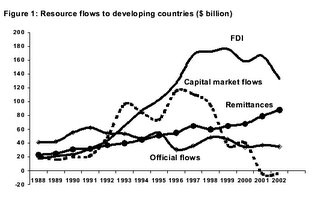Cellulosic Ethanol
The San Jose Mercury News has had several articles on ethanol just in the last two weeks. Venture Capitalists in the tech sector are starting to invest in alternative energy start-ups. I eagerly await the Merc publishing a series of articles on solar, wind, hydrogen, fuel cells, and hydro power. How about an article on how Nuclear Energy stacks up against these other energy sources? The combination of risk taking from the private sector, goverment funded research and incentives, just might lead to a breakthrough technology that can scale.
The excitement surrounding ethanol revolves primarily around Cellulosic Ethanol. To think that a few weeks ago the President mumbled something about switchgrass. I hope the Prez starts putting some pressure on the automakers.
What has technologists in Silicon Valley and elsewhere buzzing is the emerging science of cellulosic ethanol. The process shreds switchgrass, wood chips or other plant byproducts such as corn stalks, and then adds special enzymes to break down the mass of cell walls of these plants, or cellulose, into sugars. These sugars can then be used to ferment ethanol.
By some estimates, cellulosic ethanol promises to reduce greenhouse emissions by 60 to 80 percent and, once in widespread commercial production, could cost about the same as corn ethanol to make.
But the real bonus, supporters say, is that cellulosic ethanol could radically improve energy output over gasoline and corn ethanol. With gasoline, you only get 0.8 units of energy output for every unit of fossil fuel used in production. With cellulosic ethanol, you get five units out for every unit of fossil fuel used. That's because the sun is doing all the work.
Problem is, most experts say commercial production of cellulosic ethanol is still three years away.
Meanwhile, venture capitalist Khosla is the most high-profile ethanol convert in the tech world. He's pushing policies to speed up the shift to ethanol, advocating a government mandate for car companies to produce so-called ``flex fuel'' cars, or vehicles that can run on fuel that's up to 85 percent ethanol. He's also funding a state ballot initiative to slap a tax on oil extracted in California.
Khosla, who previously funded telecom companies like Juniper Networks, Siara and Cerent, says he now has two investments in companies focused on cellulosic ethanol, including BC International of Dedham, Mass. He still has an office at Kleiner Perkins Caufield & Byers in Menlo Park but two years ago left the firm and formed his own, Khosla Ventures, to invest in new technologies, including ethanol.
At first, he assumed the sector wouldn't be profitable and was committed to ethanol projects out of concern for the environment, he said. But the more he dabbled, the more attractive it became: ``Now I think it makes sense because it's a great investment; that's not where I started.''
Ethanol has the best chance of replacing petroleum, he says: ``None of the other options, including hydrogen, are realistic,'' he says.





